How to Plan an Indoor Cannabis Garden
The ultimate blueprint on how to plan an indoor cannabis garden in ten easy steps. Discover everything you need to know to get your marijuana grow room on the right track.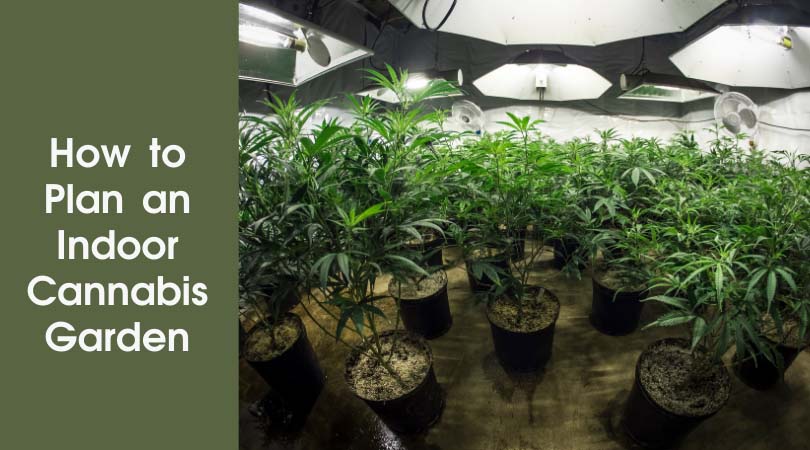 When it comes to growing weed indoors — a little planning goes a long way.
When it comes to growing weed indoors — a little planning goes a long way.
Growing weed indoors takes time, months, actually, and it’s best to set up the grow room right the first time around.
In other words, say goodbye to cut-corners and mickey mouse jobs and say hello to the perfect cannabis garden blueprint.
Read along to learn how to plan and build an indoor marijuana garden step-by-step. Discover a unique overview of the essential steps that you must take to ensure an efficient and productive indoor weed room.
Let’s begin!
Why You Need to Plan Your Indoor Marijuana Garden
Each year, new cannabis cultivators make the same mistake — they rush the planning process, cut corners, and fail to implement an efficient marijuana room design.
The result?
Mediocre harvests, pest and disease outbreaks, crop-wide deficiencies, and sky-high utility bills.
Instead of falling prey to one of the most common mistakes, it’s time to learn the number one tip — carefully plan an indoor weed garden. Whether you decide to build a grow room or set up a grow tent, each act must be done according to your plan.
Let’s look at the benefits of planning a marijuana garden
The Benefits of Planning a Cannabis Garden
- Bountiful harvest
- A vigorous and healthy crop
- Top-shelf buds
- Reduced utility bills
- Less personal stress
As you can see, there isn’t a downside when you plan your indoor marijuana grow room. Instead, planning leads to bigger yields, increased free-time, and a less stressful growing experience.
How to Build An Indoor Cannabis Garden in Ten Easy Steps
When it comes to setting up a marijuana grow room, there are thousands of variations depending on specific strains, room size, and cultivation techniques.
Therefore, here is the skeleton of how to plan an efficient marijuana garden in ten easy steps. By the time you’re done reading, you’ll have a clear trajectory as you begin to build your indoor grow room.
Step 1: Determine a Suitable Area to Grow Marijuana Indoors
The number one question is, where can I grow the weed? Or how much room do I need to grow marijuana indoors
Whether you live in a two-story house or a one-bedroom flat, there’s always enough space for one or more cannabis plants.
Here’s a brief list of locations that you can grow weed in:
- Basement
- Spare room (bedroom or office space)
- Closet or cabinet
- Attic
- Garage
Furthermore, here are a handful of considerations to take into account when choosing a suitable area to grow cannabis indoors:
- Does the area have access to a window to supply fresh air or exhaust hot air?
- Is the area out of public sight?
- Can the space accommodate cannabis plants and growing equipment?
- Does the area have easy access to electrical outlets?
- Is water access nearby?
If you answered yes to all of the above — the search is over!
The sky’s the limit when it comes to finding a suitable area to grow weed indoors. Once you’ve determined the ideal location, it’s time to break out the measuring tape and the notes app on your phone to record the area’s dimensions.
Once you determine how much space you’re working with — you may move on to the next step.
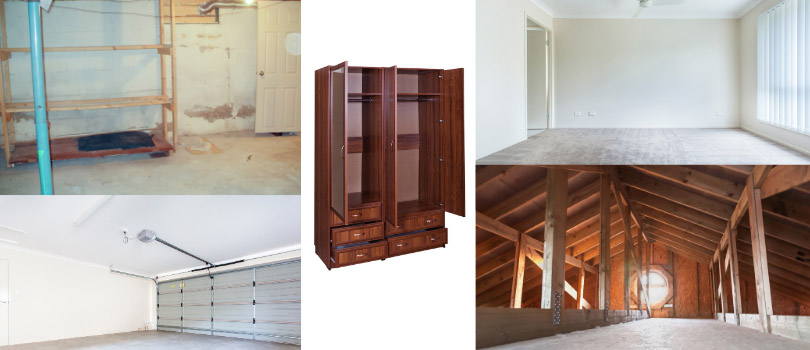
Any space can be suitable for a grow room.
Step 2: Choose the Best Cannabis Seeds for Your Grow Room
Now, depending on the size of the grow space, it’s time to choose the best feminized or autoflowering cannabis seeds for your grow room.
Luckily, we’ve covered this subject, and you can find it by heading over to Step 3 in our Grow Guide, or head straight to our Best Cannabis Seeds Buyer’s Guide. However, let’s briefly touch upon the issue since you’re already here.
Here’s a simple way to choose marijuana seeds based on the indoor grow room’s available space.
Small Grow Space
Typically, small spaces are considered to be less than 3’x3’x5′.
Don’t worry if your grow space falls within this range! Cannabis plants are vigorous plants and quickly adapt to small environments.
If you decide to grow weed in a small area, it’s best to choose autoflowering strains due to their short stature and ultra-fast flowering potential. Of course, you may select feminized marijuana strains, but they must exhibit a compact growth profile.
Here’s a list of strain characteristics that you must consider when growing weed in a small space, such as a closet:
- Compact growth profile
- Short stature
- Rapid flowering speed (less than 9-weeks)
Large Grow Space
Anything over 5’x5’x7′ is considered a large grow space.
A bigger grow room means you can fit a few large plants or many small cannabis plants. However, the larger the grow space — the more equipment needed.
Overall, you may choose between feminized and autoflowering strains that exhibit ideal growing profiles.
Here’s a list of strain characteristics that you must consider when growing marijuana in a large space, such as a spare bedroom:
- Compact or “branchy” growth profile
- Short or tall stature
- Rapid or long flowering speed
As you can see, the benefit of growing weed in a large grow room is the flexibility when choosing indica, sativa, or hybrid cannabis seeds.
Step 3: Choose to Build the Grow Room or Buy a Grow Tent
Next, will you build a marijuana grow room or buy a cannabis grow tent?
Both have their pros and cons, but it’s up to you to make the final choice. Remember, building a grow room requires additional time and planning but affords customizability, whereas setting up a grow tent is easy and fast.
Once you make this vital decision — it’s time to build!
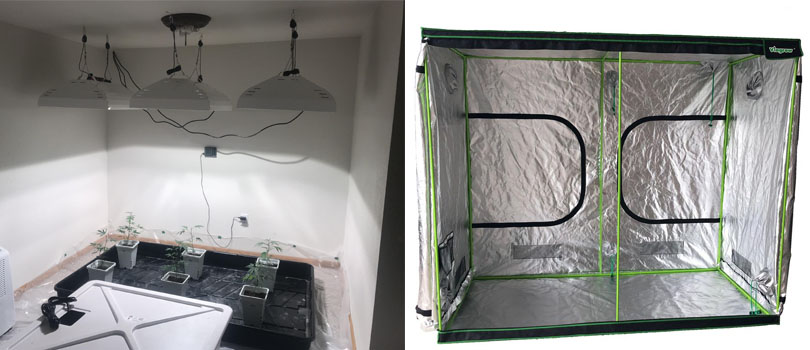
There are pros and cons to both making your own grow room or buying a tent.
Building a DIY Marijuana Grow Room
Every DIY grow room setup is different. There are, however, three features that all DIY cannabis grow rooms must incorporate.
- Reflectivity to enhance light output via mylar or white paint
- Airtightness to ensure a sealed environment
- Light proofing to fight against light leaks
As long as your DIY grow room features these three aspects, it does not matter how you build the grow room.
Setting Up a Cannabis Grow Tent
Setting up a cannabis grow tent is a streamlined alternative to building a DIY marijuana grow room.
Luckily for you, grow tents are available in multiple sizes to suit the area of your grow space. For example, the grow area measures 6’x6’x10′; therefore, you must use a grow tent with slightly smaller dimensions, such as 5’x5’x7′.
Setting up a marijuana grow tent is straightforward. Simply follow the manufacturer’s instructions, and you’ll have a brand new grow tent ready for the next steps.
Read: The Best Grow Tents for Cannabis Cultivators
Step 4: Choose Your Marijuana Grow Lights
Now, let’s discuss one of the most critical aspects of your marijuana grow room — lighting equipment.
For an excellent introduction on everything you need to marijuana grow lights, head over to Section 2 in our Grow Guide. If you’re already familiar with cannabis grow lights — read along!
Remember, you must choose an appropriate grow light according to the size of the grow room. Let’s take a look at common light pairings in relationship to the available grow area.
Micro Cannabis Grow Room
Want to grow amazing weed in tiny places? With the proper lighting system — you can!
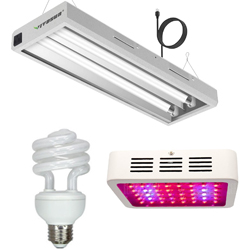
Ultra-small grow spaces pack a punch when efficiently designed. Therefore, here’s a list of appropriate lights that will fuel your upcoming micro weed room.
- 60 to 400-watt LEDs
- 40-60-watt CFLs
- 24-54-watt T-5s
As you can see, we do not include HID lighting for micro cannabis grow rooms. When growing in ultra-small areas, you need grow lights that produce minimal heat and ample lumens.
Mid-Size Marijuana Grow Room
Mid-size spaces, such as a closet, may range between 2’x2’x4′ and 4’x4’x6′.
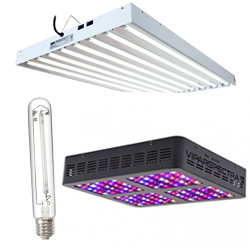
Mid-size cannabis grow rooms benefit from a wide range of grow lights, such as:
- 400-1,000-watt LEDs
- 150-watt CFLs
- 54-200-watt T-5s
- 400-600-watt HID
Remember, the grow light you select is contingent on removing excess heat from the grow room. If you cannot remove heat from the grow room via adequate ventilation, it’s best to err on the side of caution and purchase low-watt HIDs or efficient LEDs.
Large Marijuana Grow Room
Ok, now we’re talking!
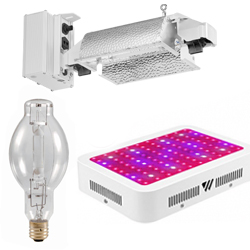
Large cannabis grow rooms, such as a spare bedroom or garage, are suitable for the big guns — HID and plasma lighting.
Larger grow rooms are anything 5’x5’x7′ and over. Therefore, you have a wide selection of grow lights to choose from. Here’s a list of stellar lighting wattages that will pump out trichome-dusted nugs by the pound.
- 600-1,000-watt HID(s)
- 600-1,000-watt plasma system(s)
- 600-1,000-watt LED system(s)
Step 5: Determine Number of Plants in the Garden
Next, it’s time to sit down and do some calculations.
To determine the most efficient number of cannabis plants, you must understand:
- The light footprint of the grow light system
- The available space for cannabis plants within the grow room
Next, you must understand the number of plants that can fit within a square meter (10ft squared). To make your life easier, here’s a list:
- Number of plants grown in the SOG method per m²: 4-16
- Number of plants grown in the ScrOG method per m²: 1-2
- Number of plants grown in the LST method per m²: 4-6
- Number of plants grown in the Natural method per m²: 1-4
Once you know how many square meters are available, you can determine the garden’s ideal number of plants.
However, you must also consider your lighting system’s footprint.
Here’s a list of standard lighting systems and their associated lighting footprint. Take a look at each to determine which fits your indoor marijuana room the best.
- 600-watt HID: 5’x5′ footprint
- 1,000-watt HID: 8’x8′ footprint
- 400-watt LED: 4’x4′ footprint
- 400-watt HID: 3’x3′ footprint
- 150-watt T-5: 2’x2′ footprint

The footprint is how many plants you can effectively grow under a single light.
Step 6: Decide Between Hydroponics or Soil
This is a big decision.
The difference between hydroponics and soil is significant. Therefore, we recommend looking at our grow medium section that can be found in our Grow Bible in Step 2.
If you’re all about growing weed au natural — growing in organic soil is the way to go. Don’t mind synthetic fertilizer in return for rapid growth, flexibility, and larger yields? Choose hydroponics-based media.
Step 7: Provide Proper Air Flow for the Indoor Environment
Just how you need to breathe — so do your marijuana plants.
Ventilation is just as important as watering and feeding your marijuana plants. Cannabis plants consume CO2 and expel O2 via respiration. Furthermore, more carbon dioxide in the air results in increased photosynthesis levels — thus propelling your marijuana plants into overdrive.
Therefore, it’s to your benefit by providing fresh air to your indoor weed garden. Aside from increased levels of growth, proper airflow in the garden offers a multitude of benefits.
Let’s take a brief look at each:
- Reduces susceptibility to diseases and pests
- Increases nutrient uptake
- Increases drought tolerance
- Stimulates rapid growth
- Reduces the accumulated heat within the grow room
- Decreases the humidity level of the grow room
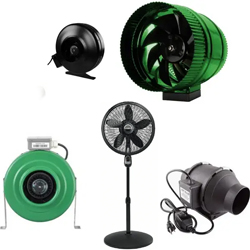
Now, you must be wondering what you can use to provide airflow for your indoor cannabis room. Here’s a list of must-have tools to choose from to properly ventilate your weed garden:
- Inline fans
- Oscillating fans
- Clip-on fans
- Booster fans
- Blower fans
- Floor fans
- Ducting
Furthermore, you can boost the CO2 of the available air with the help of:
- CO2 Generators
- Compressed CO2
Last but not least, here’s a list of planning tips that you must consider at this point:
- Will the ventilation equipment fit in the garden?
- Can you hang the ventilation equipment?
- How many CFM’s do you need to supply?
For further reading on ventilation, head over to Step 2 under the ventilation tab.
Step 8: Incorporate an Irrigation and Feeding Strategy
The irrigation strategy that you choose is entirely dependent on your choice of substrate.
In other words, what are you growing in — soil or hydro?
Irrigation Strategies For Soil-Based Media
- Hand water
- Drip irrigation
Irrigation Strategies For Hydroponic-Based Media
- Drip irrigation
- Hand water
- Nutrient film technique (NFT)
- Drain-to-Waste (or recycle)
- Aeroponics
- Deep water culture (DWC)
It goes without saying that if you choose hydroponics, you must have pH and nutrient meters to ensure a healthy crop.
Next, you must equally consider the feeding strategy for your marijuana garden.
Feeding Strategies For Soil-Based Media
- Bagged soil
- Soil amendments
- Bottled nutrients
Feeding Strategies For Hydroponic-Based Media
- Bottled nutrients
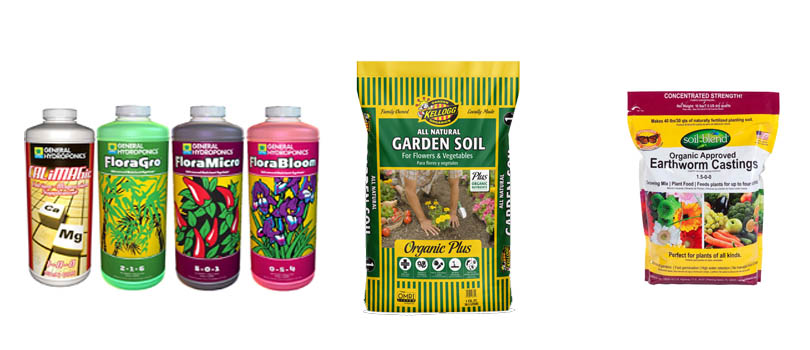
You’ll need to choose among different types of bottled nutrients, soils, and soil amendments, depending on your medium.
Step 9: Plan an IPM Strategy
We’re almost there!
IPM stands for insect pest management and is one of the most significant protocols for all marijuana grow rooms. IPM covers everything that can potentially harm your indoor crop, such as:
- Viruses
- Bacteria
- Fungi
- Insects
Therefore, you’re going to need an assortment of weapons to prevent the possibility of a hostile takeover in your garden.
However, protection should never compromise you and your family’s health. In other words, never use non-organic products.
Instead, focus on plant-based or natural IPM products, such as:
- Neem oil
- Diatomaceous earth
- Sulfur spray
- Copper spray
- Serenade spray
As well as preventative measures, such as:
- Buy autoflowering or feminized seeds that have a high pest and disease resistance
- Keep the indoor garden clean
- Always wear clean clothes into the grow room
- Never over-water marijuana plants
- Always sanitize the grow room after each cycle
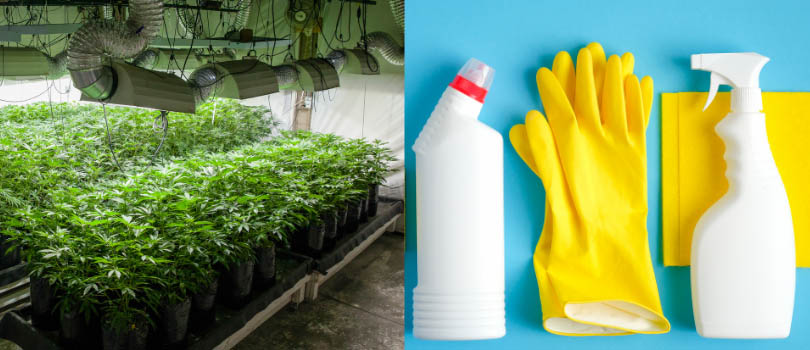
You’ll need to keep your grow room squeaky clean to prevent pests from reaching your beloved crop.
Step 10: Test the Indoor Environment and Start the Garden
Last but not least — now’s the time to test the indoor environment for 24-hours.
You might ask — why should I waste a day testing the indoor environment?
The answer to this question is simple: you want to make sure everything works as it should before sprouting your precious marijuana seeds. Wouldn’t it be terrible to wake up one morning only to find your indoor grow room well over 100°F?
To avoid any serious mishaps, here’s a list of things to check during the 24-hour window:
- Ensure the grow room maintains a steady temperature and humidity
- Check for light leaks during lights on and lights off
- Ensure the grow lights turn on and off at your pre-selected times
- Check the irrigation system (if you build it before germinating seeds)
- Set the fan speed to an appropriate level
Once your marijuana grow room passes the test — it’s time to get growing!
